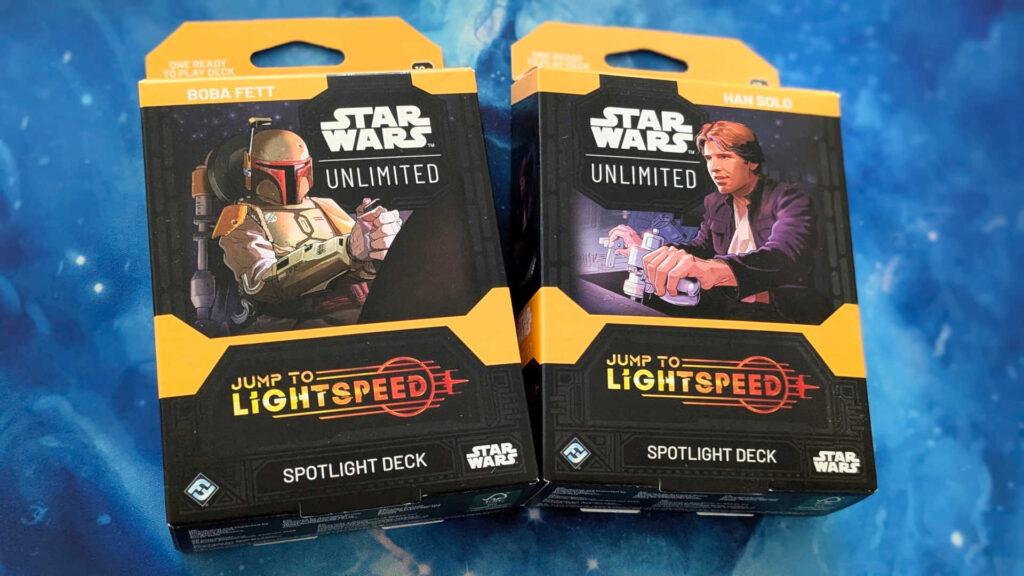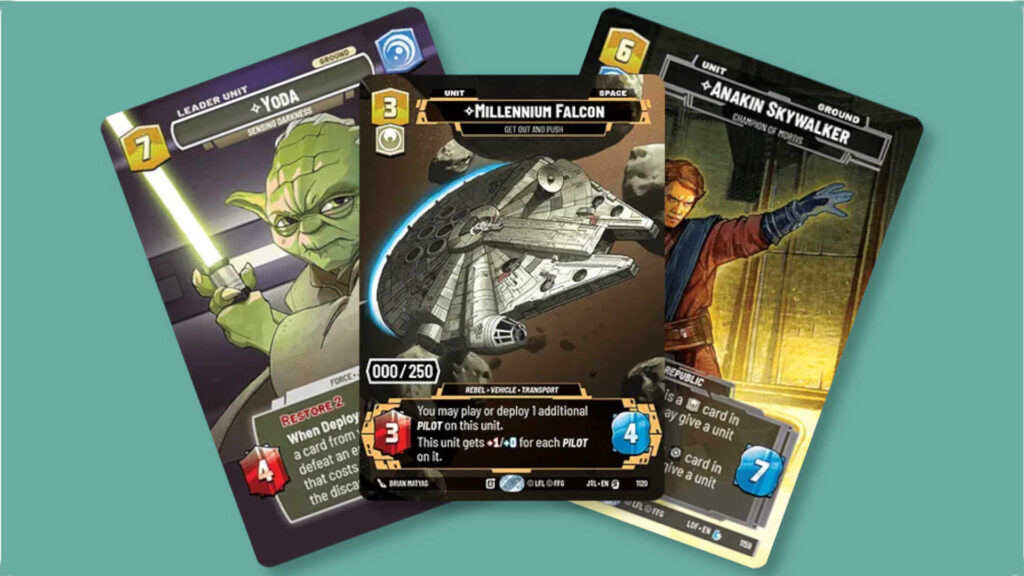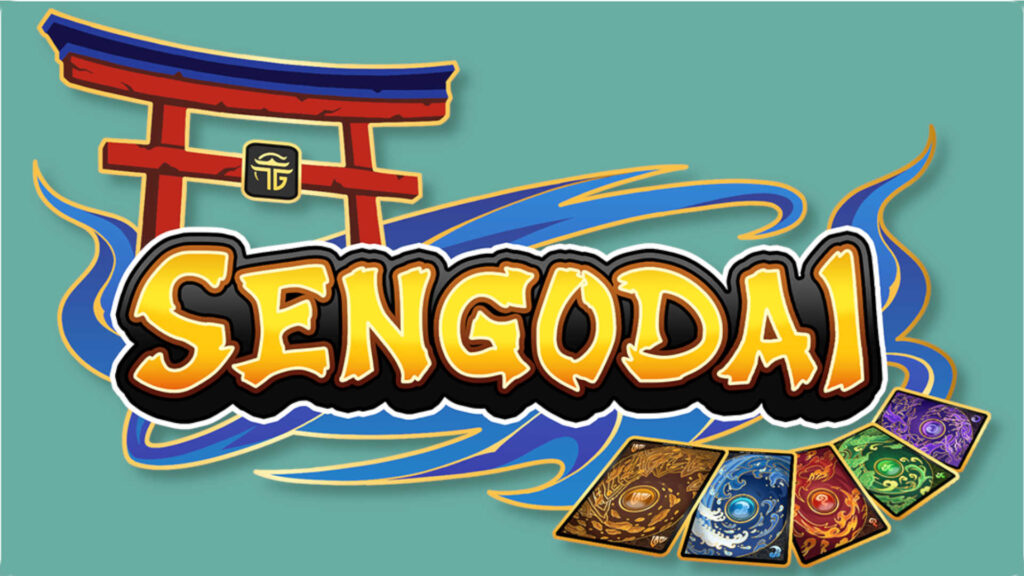Images by the author
The Star Wars saga has been adapted into tabletop game form countless times, and is also the subject of more trading card games (or TCGs) than any other licensed property (just check out our history of Star Wars card games for more insight). The latest TCG to take players on a trip to a galaxy far, far away is Star Wars Unlimited, the fourth set of which, Jump to Lightspeed, has just been released.
As part of the Jump to Lightspeed product range, a new type of starter deck is available, replacing the two-player starters which were a staple of the previous three sets. Are Jump to Lightspeed’s Spotlight Decks worth picking up? Let’s take a look.
Table of Contents
ToggleWhat’s Included in Each Spotlight Deck?
There are two Spotlight Decks available, one headed up by Han Solo, and the other features a deck built around the perennially popular bounty hunter, Boba Fett. Each deck is fixed, with each pack containing a 50-card deck, plus a base card (Echo Base for Han, Jabba’s Palace for Fett) and of course, the Han Solo or Boba Fett leader card.
There’s a few token cards, which are required for the abilities of certain cards, and a double sheet of punch-out, cardboard counters to track damage, initiative, and the leader’s epic action.
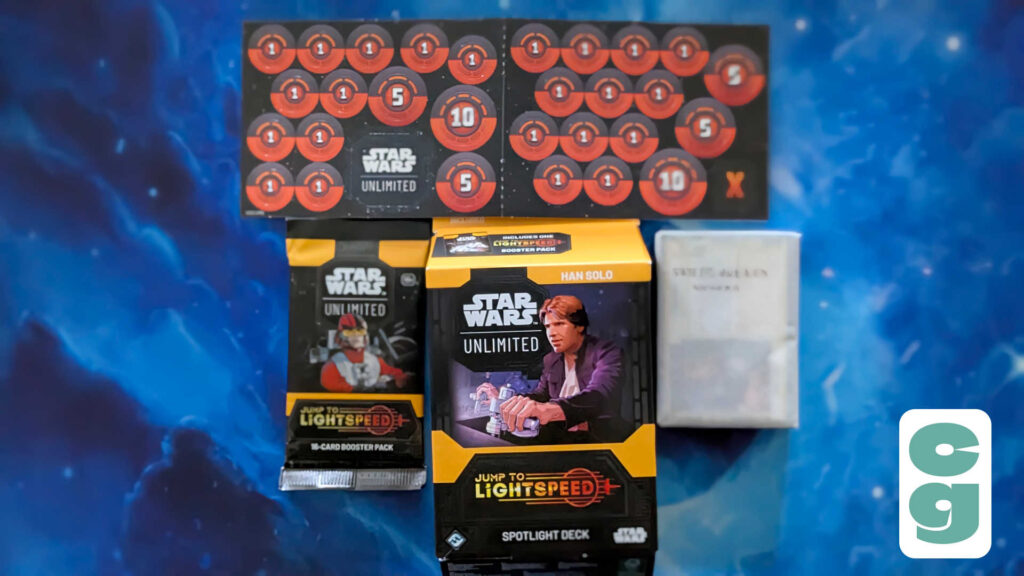
Finally, there’s also a Jump to Lightspeed booster pack, which means there’s a chance to find cards that you may be able to use to upgrade your deck, or even special, rare cards that could be among the Jump to Lightspeed set’s most wanted.
How Do the Spotlight Decks Compare to Star Wars Unlimited’s Two-Player Starter Sets?
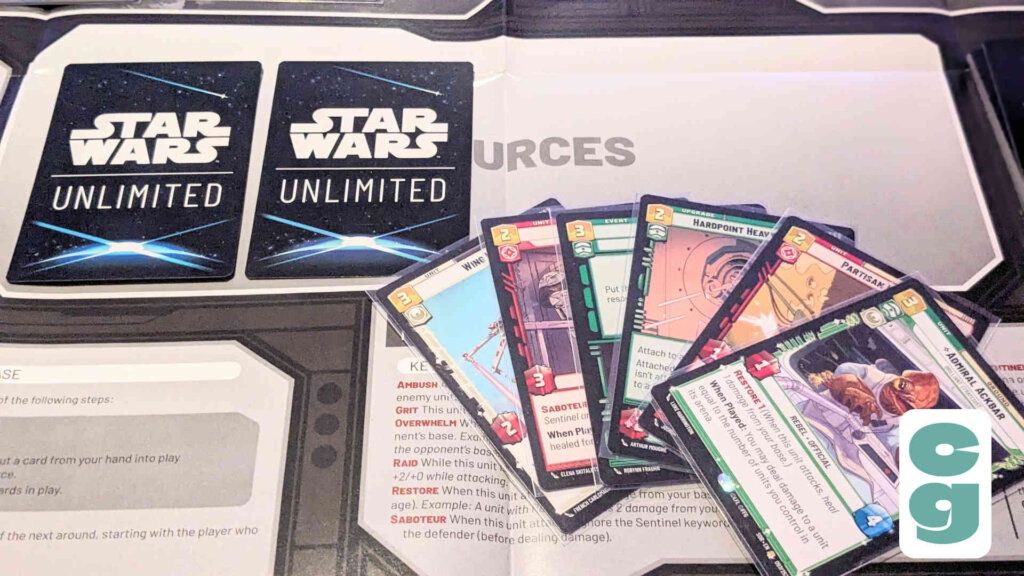
We’ve reviewed each of the Two-Player Starter sets here on Card Gamer (the first, second and third), finding that they made Star Wars Unlimited one of the most beginner friendly TCGs on the market. The superb paper play mats, which featured breakdowns of keywords, turn summaries, and clearly marked play areas (as seen in the above image), were better than any other starter play mat currently available. And of course having two decks, so players could begin playing against an opponent immediately, was also a fantastic idea.
Each set’s dedicated starter set gave players a great overview of the mechanics and overall focus of its respective set, with the Bounty and Smuggle keywords, for example, being showcased well in the Shadows of the Galaxy set, which was set in the post-Return of the Jedi era and featured a showdown between The Mandalorian and Moff Gideon.
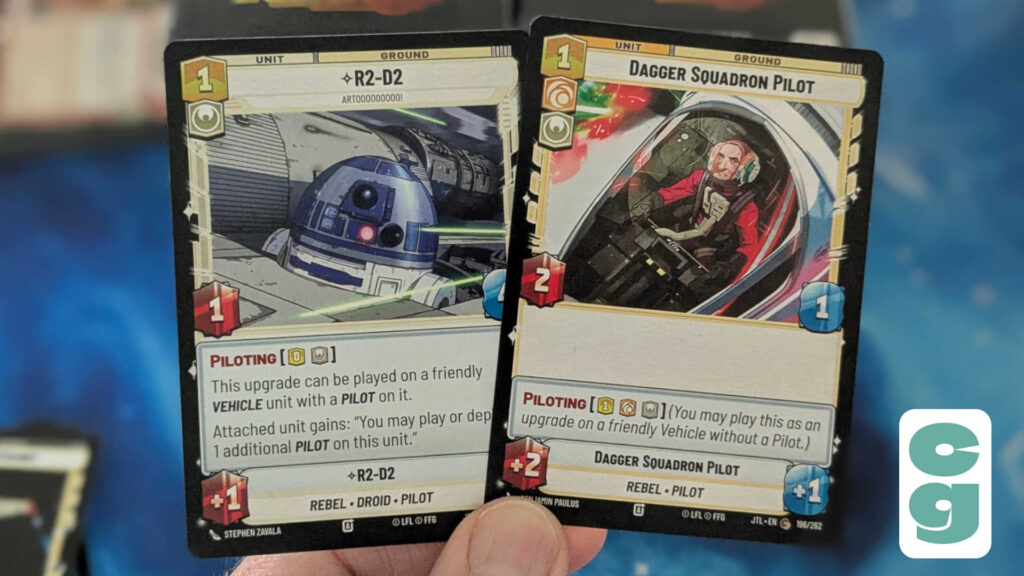
Which all means that the Spotlight Decks can’t help but feel like a downgrade, especially given that the difference in price is only around $5. Though each deck does a good job of showcasing Jump to Lightspeed’s space combat focus and the debut of the Piloting keyword, as you can see from the two examples above, it does feel like a drastically less beginner friendly approach, given that each player will need their own deck to play straight away.
Not only that, but those incredibly helpful play mats are no longer included, and this feels like perhaps the biggest misstep of all. Alongside this, no rules are included in the box, so new players picking up these decks will need to hunt online for them. Though that’s not the end of the world and is relatively easy to do, it still strikes me as somewhat short sighted, and does feel like a strange cost-cutting measure, which isn’t going to help Star Wars Unlimited‘s potential for growth.
The inclusion of a booster pack, given that each one has 16 cards, including a leader and a base, along with at least one rare card, is a welcome addition, however, giving players the opportunity to tinker with the fixed deck of cards they get as part of the contents of the Spotlight Deck.
Which Spotlight Deck Should I Get?
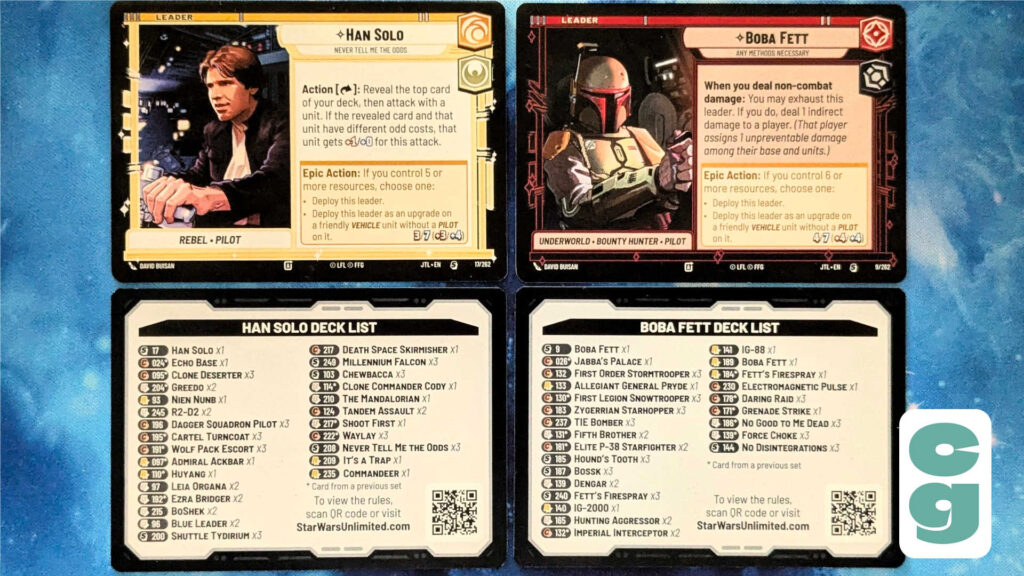
Both decks are well balanced against each other, but likely won’t be competitive against decks that other players have built themselves. They do feel more tuned towards advanced, stronger play than the Two-Player Starters, however, so they should hold their own against basic decks. As to which one is best to buy, we’ve seen that Han Solo tends to be the strongest deck overall, but Boba Fett does have some neat tricks up his sleeve.
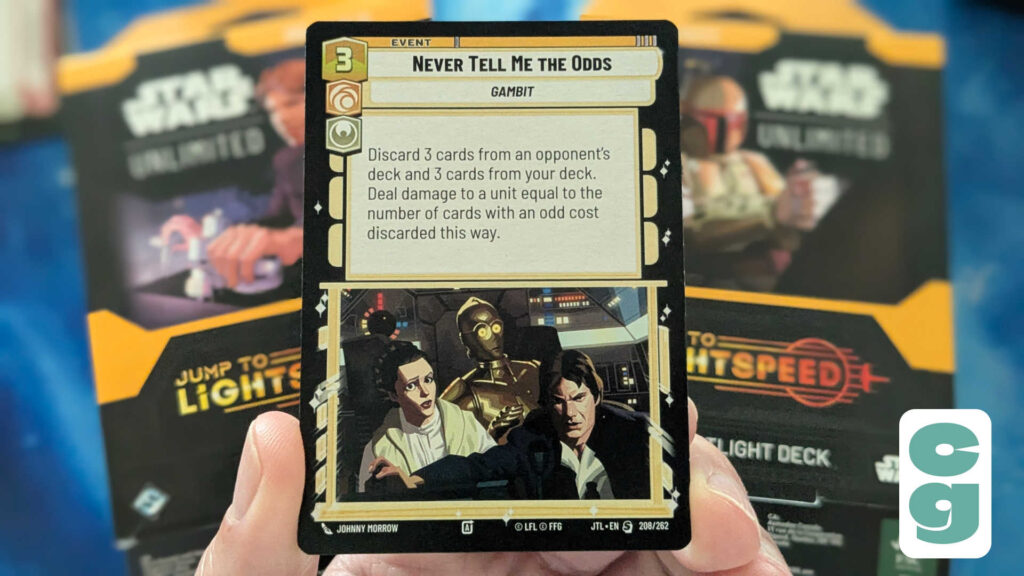
Ultimately, it’s down to personal preference; Han Solo tends to be a slightly more beginner friendly deck which packs a punch. It’s also worth noting that there’s arguably no card that’s cooler, or more thematic, than Never Tell Me the Odds, especially when you realize that all of the cards in Han’s deck have an odd numbered cost.
By contrast, Boba Fett requires a bit more creative play with the use of non-combat damage. Either one could be bolstered by the included booster packs, of course, and we also have a useful guide with great advice on how to upgrade the Spotlight Decks, which shows how to best utilize the cards as a springboard to building a much more competitive deck.
Are the Spotlight Decks Suitable If I’m New to Star Wars Unlimited?
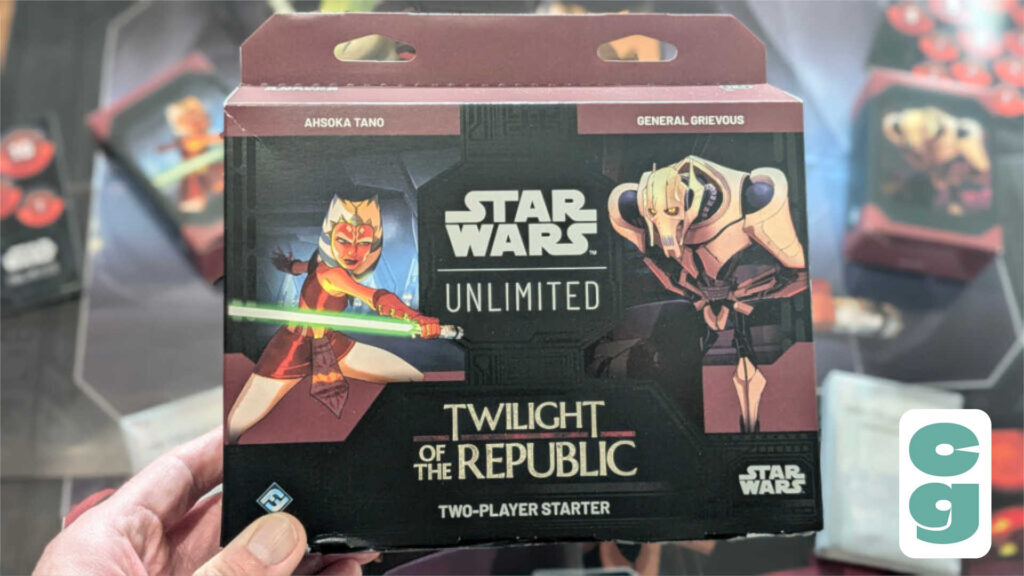
They definitely aren’t, as they’re designed to be a step up in complexity and competitiveness for existing players. Instead, we’d recommend getting hold of the Twilight of the Republic Two-Player Starter, as it’s the most recent of the beginner-focused sets, and features all of the latest keywords and abilities, except Piloting (which debuted in Jump to Lightspeed). This will also provide you with everything you need for two players, including rules and the play mats which will aid immeasurably in learning how to play Star Wars Unlimited.
The Card Gamer Verdict
Unfortunately, Spotlight Decks feel like a major downgrade from the Two-Player Starters that were available for previous Star Wars Unlimited sets, and the lack of accessibility for new players extends to there being no rules or play mats included; even experienced players could have benefited from a paper play mat, and it feels cheap that there isn’t one in the box.
All that said, these Spotlight Decks are deliberately aimed at veteran Star Wars Unlimited players, and Magic: The Gathering’s preconstructed Commander Decks have already proven that themed, non-beginner decks do perform well commercially.
With limited-run, expensive Carbonite Boosters also available as part of the Jump to Lightspeed range, it does feel as if this is the first set aimed at collectors. With the recent announcement of the next set, Legends of the Force, we already know that set’s product line will be the same as Jump to Lightspeed, including Spotlight Decks. However, we also know that we haven’t seen the last of Two-Player Starters either.
Overall the Spotlight Decks feel too advanced for beginners, and a little too uncompetitive for the more experienced players they’re aimed at. They still play well enough, and of course, Star Wars Unlimited is always fun to play, regardless of the format or decks used.
New to Star Wars Unlimited? Check out our how to play Star Wars Unlimited guide, along with our guide on how to play the game’s draft and sealed formats, with either three or six booster packs needed per person, depending on the format, and no other cards required! For more on the Jump to Lightspeed set in general, take a look at our full list of cards in the set.


